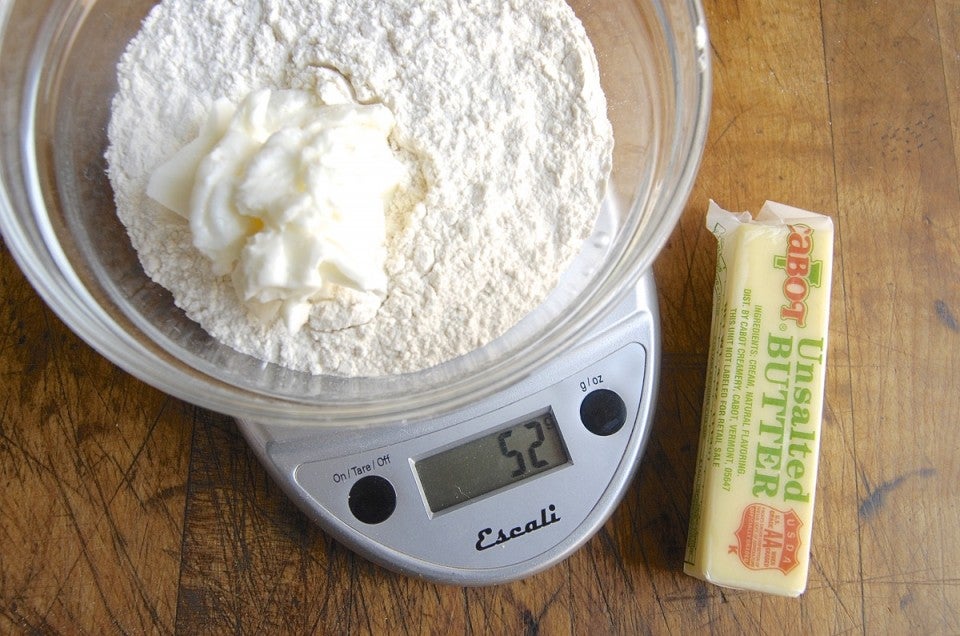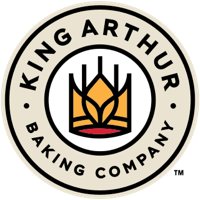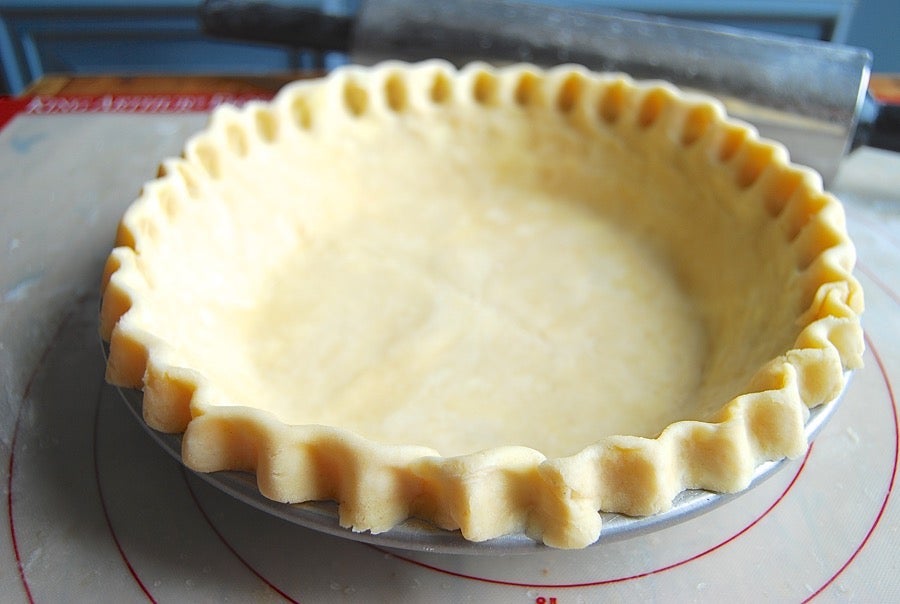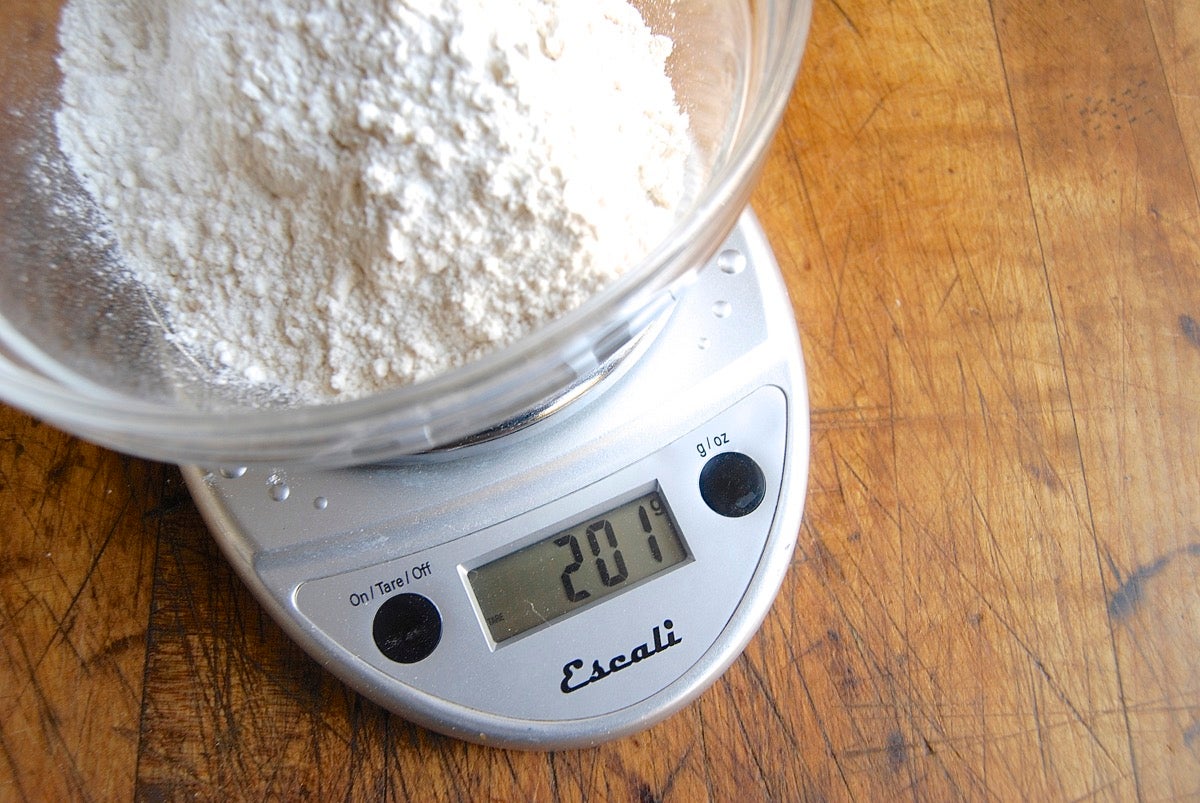


You know how sometimes you're baking, and all of a sudden you feel the urge to say some very bad words?
Like when the pumpkin filling slops onto the floor as you juggle the pie on its way to the oven.
Or you set the timer for just 2 more minutes, to give those brownies a crisp edge – then go outside to get the mail, run into a neighbor, get chatting and, well... bad words are definitely said as the acrid smell of burned brownies fills the kitchen.
I have a pie crust recipe I've loved for years, but it's always been just a tad... too... small for my favorite pie pan. Many's the time I've said [bad words] while trying to roll the crust just a tiny bit larger – causing it, of course, to stick, tear, or both.
Some people like making delicate, thin pie crust; I prefer a more substantial crust, one that's A) easier to work with, and B) doesn't simply become inconsequential under its load of bubbling berries.
And this crust recipe – well, I could barely roll it wide enough for my 9" wide, 1 1/2"-deep pie pan...
...let alone make any kind of stand-up crimped edge. I mean, if you're going to make a crimped edge, MAKE one.
Then one day (as my 5th grade teacher Miss Kellam would have said), "Light dawns on Marblehead!"
Why not make the crust a bit bigger?
I don't need a new recipe; I love the crust. I just want more of it – not "double" more, just a little bit more.
The challenge: increase the size of the crust without changing the balance among its ingredients. I like the mix of butter and shortening, the "just enough" ice water that yields delicacy rather than cardboard-y hardness.
The solution: baker's percentage, a.k.a. baker's weights (or baker's math).
Percentages? Math? What does this have to do with flour and butter and a wonderfully flaky pie crust?
Lots, as you'll soon see.
Now, don't click out of here; I'm not going all math-y on you. This is simple, once you get the hang of it. And pretty soon you'll be making 17 muffins instead of 12, five biscuits instead of 15 – using just a couple of basic calculations.
Let's take a look at a typical pie crust recipe and see how this works.

This is the beginning of our Classic Single Pie Crust recipe. You'll notice I'm looking at the recipe not in volume, but in grams; baker's percentage is all based on weight, not volume, so you'll need a scale to try this at home.
And why grams? Grams are MUCH easier to calculate percentages with than ounces and fractions of ounces.
Flour is pegged at 100%, and everything else is viewed as a percentage of flour. In our pie crust recipe, flour weighs 177g.
To determine the percentage of the other ingredients, divide each one by the weight of the flour (177g), then multiply the result (which is in decimal form) by 100 to convert it to a percent:
• The shortening (46g) is 26% of the flour, by weight: (46 ÷ 177) x 100 = 26%
• The butter (71g) is 40% of the flour, by weight: (71÷ 177) x 100 = 40%
• The water (using the lesser amount, 43g) is 24% of the flour, by weight: (43 ÷ 177) x 100 = 24%
The original recipe calls for 1 1/2 cups of our unbleached all-purpose flour. Let's say I want to increase that amount to 1 2/3 cups flour; I think that little bit extra flour is just the cushion I need to make the size crust I want.
The weight of 1 2/3 cups of flour is 201g (as calculated from our online ingredient weight chart, a super resource when you're measuring by weight). Let's see what the increased weights of the rest of our ingredients will be:
Now, that's not so hard, is it?
But what about the salt, you say? Since it's such a small percentage of the flour weight, I tend to salt to taste; I'd increase the salt by maybe 1/8 teaspoon, or a big pinch.
And what happens when a recipe you're making includes eggs – which aren't measured by volume at all, but by units? Well, a large egg weighs about 50g out of its shell – so take it from there.
Once you stop thinking in units or volume, and start thinking (and measuring) in grams, scaling recipes up and down becomes quite simple.
And the results quite sublime!
Note: For a more detailed explanation, check out baker's percentage on our professional site.








January 11, 2020 at 11:28pm
In reply to 2. Reduce sugar in recipes the smart way: use baker’s percentag… by Kim (not verified)
Halving the sugar in a 3/4 cups recipe to 3/8 cups... perhaps they mean that it's better to dump it on a scale rather than try to measure that?
January 14, 2020 at 1:35pm
In reply to Halving the sugar in a 3/4… by Jaime (not verified)
Absolutely, Jaime! Measuring is always more accurate when done by weight, but it's much simpler to scale recipes up or down as well. No fractions to deal with when you're working with grams! With the ingredient weight chart at your disposal, you can easily determine that 3/8 cups granulated sugar would weigh 74.25 grams which can be rounded down to 74 grams.
August 4, 2018 at 12:03pm
August 4, 2018 at 1:40pm
In reply to I saw nothing in this post on how to lower sugar in recipes by John Spadaro (not verified)
July 19, 2018 at 6:38pm
June 17, 2018 at 10:41am
June 17, 2018 at 1:49pm
In reply to This page came up as the link for “hydration level” from the pa… by Ellen Slavitz (not verified)
September 28, 2017 at 6:06pm
September 26, 2017 at 4:47pm
September 27, 2017 at 4:09pm
In reply to Sorry if you already answer this-I have not read all the commen… by Paz Portales-Morris (not verified)
Pagination